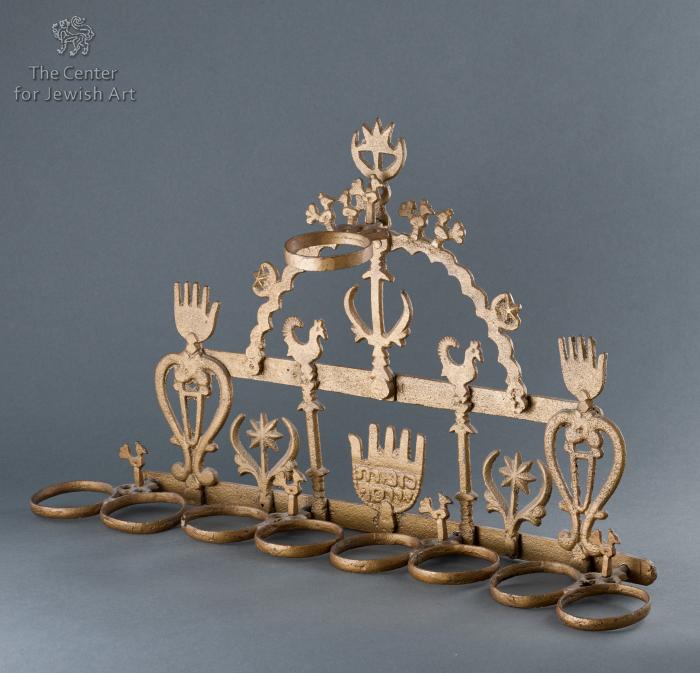Obj. ID: 37395 Hanukkah lamp, Baghdad, circa 1900

sub-set tree:
The following description was prepared by William Gross:
The festival of Chanukah is celebrated in the winter period around December and commemorates a Biblical story in which the Jews of the Land of Israel rebel against the Greek occupiers. They reclaim the desecrated Holy Temple in Jerusalem and, miraculously, the small amount of pure oil remaining is enough to keep the Temple light going for eight days. Lamps with eight burners are lit during this holiday, both in the synagogue and at home. Through the centuries, such lamps have taken a wide variety of forms.
This form of Chanukah menorah is exclusive to Iraq, and probably to Baghdad. The lamp used glass containers of oil for the burners. Its symbols are several, including the star and crescent borrowed from Islam, and the three Hamsot and birds often found decorating Iraqi Judaica. On the cast hamsa in the center is an amuletic formula of “Ben Porat Yosef", adding to the protective power of the hamsa itself. The dome shape of the backplate echoes the shape of the mosques in the area. Research into the types of Chanukah menorahs used in Baghdad indicate that this type of lamp dates from the 19th century and is the earliest of the Chanukah menorah forms still existing and was the dominant form until the second decade of the 20th century. In spite of the fact that the lamp was cast from gold-colored bronze pieces, the custom in Baghdad was to cover it with a coat of gold paint almost every year.
Inscription: On central Hamsah: Ben Porat Yosef... (Genesis 49:22)



